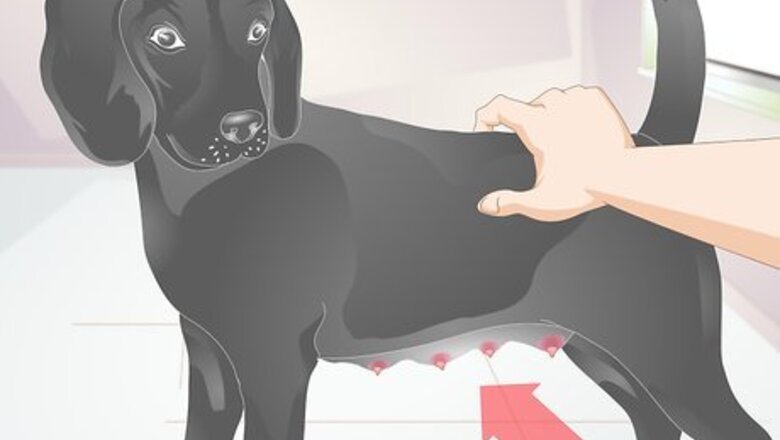
views
Recognizing the Symptoms
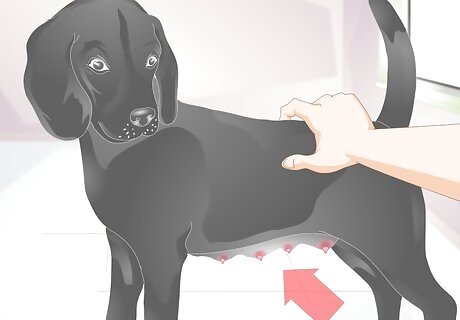
Check for painful mammary glands. If the dog has mastitis, the mammary glands will cause pain for the dog. The breast area will be firm and swollen because of the fluid from the infection, and it will be hot to the touch. The teats may be enlarged or red. The mammary glands may also have pus or blood coming from them. Any milk may have pus or blood mixed into it. The pus or milk may have a foul odor. The skin around the nipple may be damaged or cracked. If the mastitis is really bad, the glands may have abscesses or have gangrene.
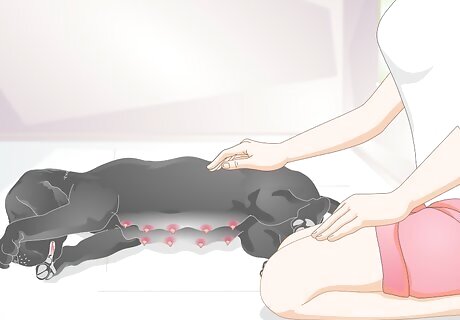
Notice any behavioral changes. Another symptom of mastitis is behavioral changes in your dog. Mastitis may cause the dog to lose their appetite and refuse to eat food. The dog may also be lethargic, depressed, and be less active than they used to be. Some dogs may have a fever and act sickly.
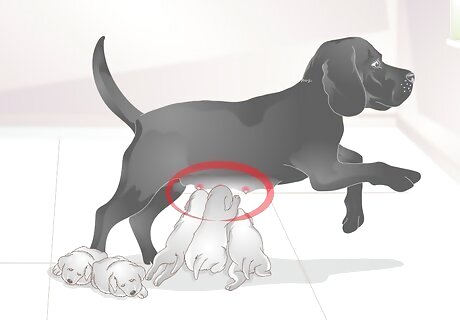
Watch for any neglect of the puppies. If your dog has mastitis, they might respond negatively to their puppies. The dog may neglect or not pay attention to the puppies because of the swollen or painful teats. In some cases, the mother may even act aggressively towards the puppies. The dog may not allow the puppies to nurse because it’s too painful on the infected mammary glands.
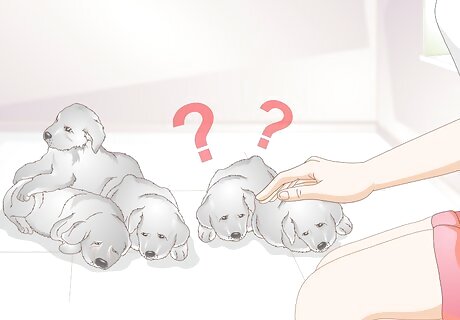
Determine if the puppies are ill or failing to thrive. Due to the mother’s neglect, the puppies may not be able to nurse. This means the puppies may not thrive or grow. The puppies may end up whining or crying, or they may try to paw at the mother to get her to pay attention to them. If the neglect is prolonged without prompt care and assistance, the puppies may get sick or die. The milk may not have all the nutrients, so the puppies may end up malnourished.
Seeking Medical Treatment
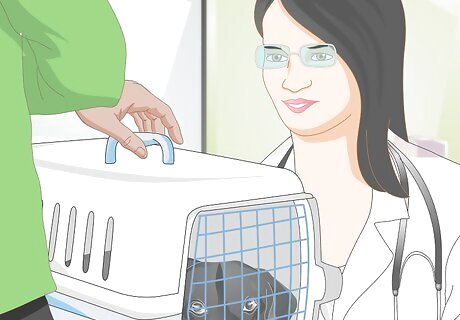
Take your dog to the vet. If your suspect that your dog has mastitis, you should take your dog to the vet immediately. You should take your dog to the vet if the mammary glands show significant swelling and inflammation, or if the condition is preventing the puppies from getting the proper nutrition. Your vet will ask for a medical history and then conduct a physical exam of the dog.
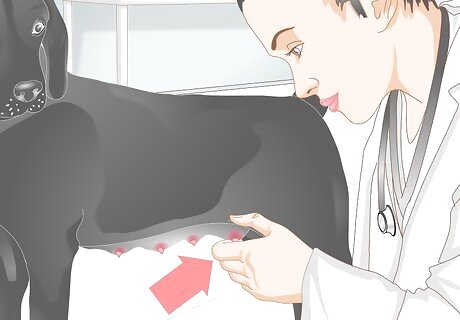
Know what to expect from your visit. One way to diagnose mastitis is to take samples from the swollen glands and analyze them. Your vet will take the samples and send them off to the lab. Your vet will probably start by getting a sample of the milk or pus from the glands and checking it for bacteria. Your vet may also want to to a sample of the firm mass collected in the breast area. To do this, they will insert a needle and remove a sample of the solid substance. Your vet may also take a culture to check for bacteria.
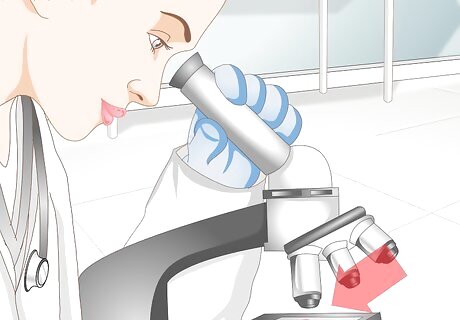
Allow the veterinarian to perform additional tests. In some cases, mastitis can become severe and start infecting the blood. This can lead to serious side effects, including death. To check for this, your vet will need to perform additional tests. They may start with a blood count. The vet may also do a biochemical profile where they check the liver, kidney, pancreas, and sugar levels. They ay also do a blood count or a urinalysis. In some instances, the vet may do chest or abdominal x-rays.
Treating and Preventing Mastitis
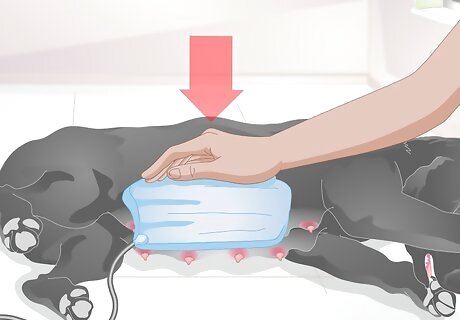
Treat mastitis. If your dog has mastitis, there are treatments available to cure it. The most common treatment is antibiotics to kill the bacteria. When the mastitis is too severe, the mammary glands may need to be surgically drained. If the glands get infected often, the dog may have to have their mammary glands removed. If the dog is ill or septic, they may need an IV. You may need to place a warm compress on the swollen glands to help reduce pain and help the milk flow better. The vet might prescribe pain medication as well, depending on the situation.
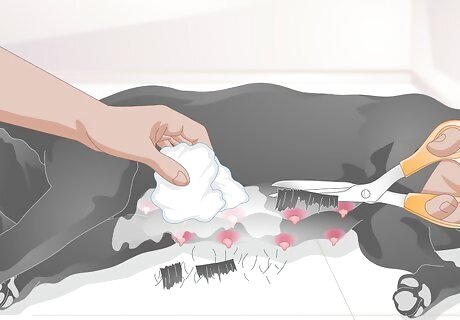
Prevent mastitis. Measures can be taken to prevent mastitis if your dog has just given birth. Make sure to keep your dog and the puppies clean. Trim the hair around the dog's mammary glands and wipe away any dirt, debris, or urine from that area. You should also clean the puppies' litter area. Make sure the puppies don't scratch the mammary glands with their nails. Clip their nails if possible. Make sure each mammary gland is expelling milk. If the puppies aren't using each teat, manually squeeze milk from them to clear bacteria and help milk not to get backed up.
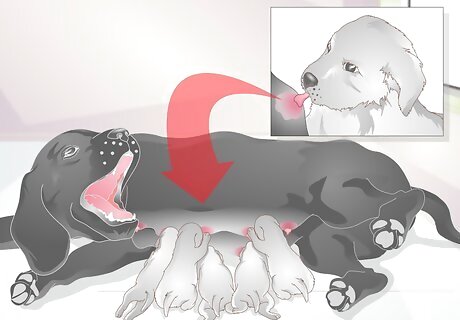
Identify the risk factors. Some risk factors may lead to mastitis in dogs. The condition is most commonly seen in female dogs who are lactating. Trauma to the mammary glands can lead to mastitis. Trauma can come from nursing puppies who bite the teat or scratch it. Trauma may also occur if the dog has short legs and the teats drag along the ground and get scratched or damaged. Poor hygiene around the mammary glands may also cause the bacterial infection. It may also occur due to the infection spreading through the blood. The first signs of mastitis are usually swollen and tender mammary glands accompanied by loss of appetite.
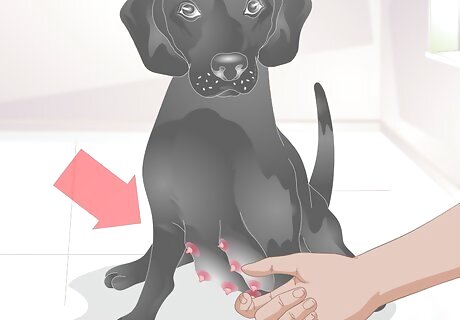
Know what mastitis is. Mastitis is an infection of the mammary glands caused by bacteria. It leads to inflammation. The infection usually starts at the opening of the teat. It can occur in one or multiple mammary glands. It generally affects female dogs who have already given birth and who are lactating. The infection is not common.




















Comments
0 comment